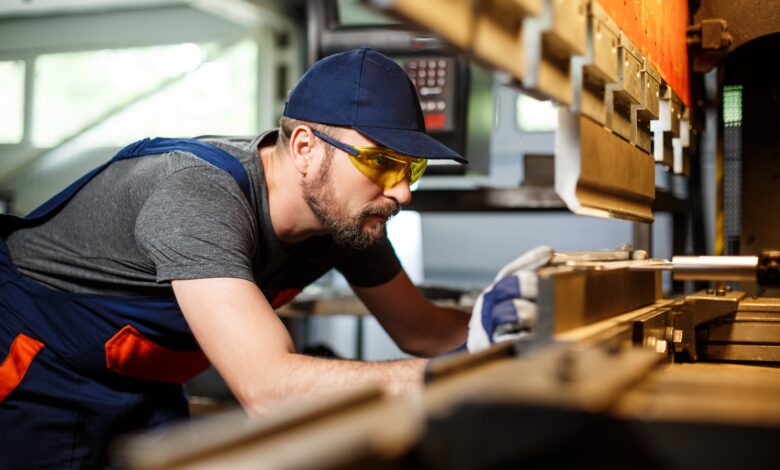How Quality Control for Manufacturing Improves Performance & Accuracy

How quality control software for manufacturing is changing the game comes down to automation. Today’s shop floors are no longer dependent on slow manual checks or scattered feedback. Instead, companies use advanced software that detects flaws in real time, corrects problems instantly, and keeps product quality consistent across every shift.
From AI-driven inspections to IoT-enabled monitoring, this technology helps teams work smarter, not just harder. And it’s not just for big operations. Even smaller manufacturers are reaping the benefits by cutting waste, reducing costs, and speeding up their time to market. The result? Fewer mistakes, faster corrections, and stronger performance overall.
How Automation Is Transforming Quality Control In Manufacturing
The manufacturing floor is experiencing a quiet rise as automation reshapes quality control practices. Firms utilizing manufacturing plants use software to check product quality. These have a significant edge right now. Three key areas are completely transformed by these technologies. Let’s examine them.
Real-Time Defect Detection
Quality issues no longer surface after production runs end. Modern automated inspection systems spot problems right away, which lets production teams act fast. High-resolution cameras and clever computer programs team up to spot flaws people might overlook.
Computer vision, a branch of AI, checks products at both microscopic and macroscopic levels. The systems can detect even slight surface scratches, shape abnormalities, or irregularities that basic methods often overlook.
You’ll quickly notice the many benefits.
- Teams catch defects right away and can stop faulty production runs or adjust equipment
- Products get checked against similar high standards, which improves consistency
- Systems reduce false positives and missed defects, which cuts down scrap, rework, and returns
Faster Feedback Loops
Feedback loops help people and machines learn and make smarter decisions as time goes on. Manufacturing teams can easily identify problems and make improvements using these loops.
Automated systems send data straight from production equipment to quality control software. This makes things better; problems get solved fast. It improves with each use.
Feedback now happens in milliseconds instead of days or weeks. Old methods might take weeks to show quality issues. Modern systems alert teams right away when something’s off. Quick alerts mean faster fixes before more defective items roll off the line.
Reduced Human Error
Traditional quality control’s biggest problem remains human error. Even the best inspectors get tired or distracted. Automated systems work 24/7 with steady precision.
Automation cuts human error in key ways. Manual inspection’s peaks and valleys? These systems eliminate them. While human inspectors might catch defects 60-90% of the time, machines keep standards steady across all products.
These systems never get tired. The last check of the day matches the first in accuracy. Unlike humans, they don’t adjust their standards to meet expected rejection rates.
Automating our checks makes production scheduling much easier to predict. By studying each production phase, businesses can eliminate defects and cut down on waste. This boosts efficiency.
Automated Quality Checks Rely On Some Pretty Cool Technology
A powerful combination of technologies works together to make automated quality checks successful. Smart factories today depend on four technological pillars. Modern quality control depends on these cornerstones; they head off defects before they even appear.
Machine Vision Systems
Machine vision systems act as the watchful eyes of automated quality control. Visual data gets a thorough going-over; these systems are extremely accurate. These systems work tirelessly around the clock, unlike human eyes that get fatigued after hours of inspection.
You’ll find machine vision in three main forms. Web manufacturers rely on line-scan cameras for consistent product checks. They capture thin image slices as materials move past. The most common type – 2D or area scan systems – handle tasks from basic sensors to complex imaging. When depth perception matters, 3D vision systems step in. Think of it like this: they use lasers to measure how far apart objects are and to understand their positions relative to one another. It’s like a 3D ruler.
Deep learning makes this possible by recognizing patterns much like humans do. “The principle of deep learning is to learn by example, rather than manually deriving the rules”. Think of it like this: the accuracy of a machine combined with the savvy of a human. This new method blows past what other vision systems can do.
Product pictures? AI inspection systems get those. High-resolution cameras capture every detail as the products roll by. The algorithms check these images against quality standards right away and flag any issues. A car factory might use these systems to catch tiny scratches or uneven paint that people could miss.
The benefits add up quickly. With AI, defect detection is faster and more comprehensive than humanly possible. Plus, you get immediate results and high-volume processing is a snap.
Production costs are reduced, and every product is held to the same quality control measures. Its performance increases with experience; the more it processes, the more refined its capabilities become. Think of it like learning a new skill. The more you practice, the better you get.
IoT and Sensor Integration
IoT creates networks of connected sensors that watch every part of production as it happens. Manufacturers can test more often and catch issues before they become serious problems.
Think of sensors as the eyes and ears of quality control. They’re constantly monitoring and checking to make sure everything is perfect. This is especially true in manufacturing. Each sensor type provides a specific kind of data, which contributes to the overall quality assessment.
Pressure, optical, and chemical sensors test whole batches for size, weight, and color. Temperature sensors watch for overheating equipment. Sensors pick up on strange machine noises; this often means it’s time for a checkup. Equipment failure predictions are possible with this data. Experts say planned maintenance should make up 80%-85% of all maintenance work.
Manufacturing’s reliance on IoT is clear from the data. The market should grow from $65.81 billion in 2024 to $181.86 billion by 2034, with a 10.7% CAGR. Instant data from interconnected devices and systems improves decision-making. Think of it like having a crystal ball for your business!
Manufacturing Quality Control Software
LineView’s quality control software for manufacturing sits at the center of these technologies. It brings data from many sources into one system and works as the brain of automated quality control.
Quality management software connects to all manufacturing data from RMAs to non-conforming inventory and BOMs. Duplicate entries? This tool wipes them out, preventing errors. Audits become simpler, decisions get better, and communication flows smoothly across the supply chain.
New systems grow with your needs through modular features. Tracking inventory and rejected items is important, as is rating suppliers and linking documents to lots. This helps us stay organized. Advanced parts handle quality audits and statistical process control. Shop floor data gets collected, then they make charts to show what it all means.
The best software uses Quality 4.0 principles. Traditional quality management gets a boost from data analytics, machine learning, and automation. Spotting potential problems?
Improved operations? Better products? Connected systems make it all possible for manufacturers.
Quality control? These four technologies have it covered. They spot problems early, react quickly, and stop defects before they happen.
Conclusion
Quality control software for manufacturing is no longer a luxury—it’s a necessity. As the industry leans into automation, companies that invest in digital tools for real-time monitoring, AI-based inspection, and connected feedback systems are seeing the payoffs: better quality, reduced costs, and faster turnaround. Whether you’re running a large-scale operation or a smaller facility, the right tools make a clear difference. These systems don’t just solve problems—they prevent them. In a competitive world, that’s how you stay ahead.




